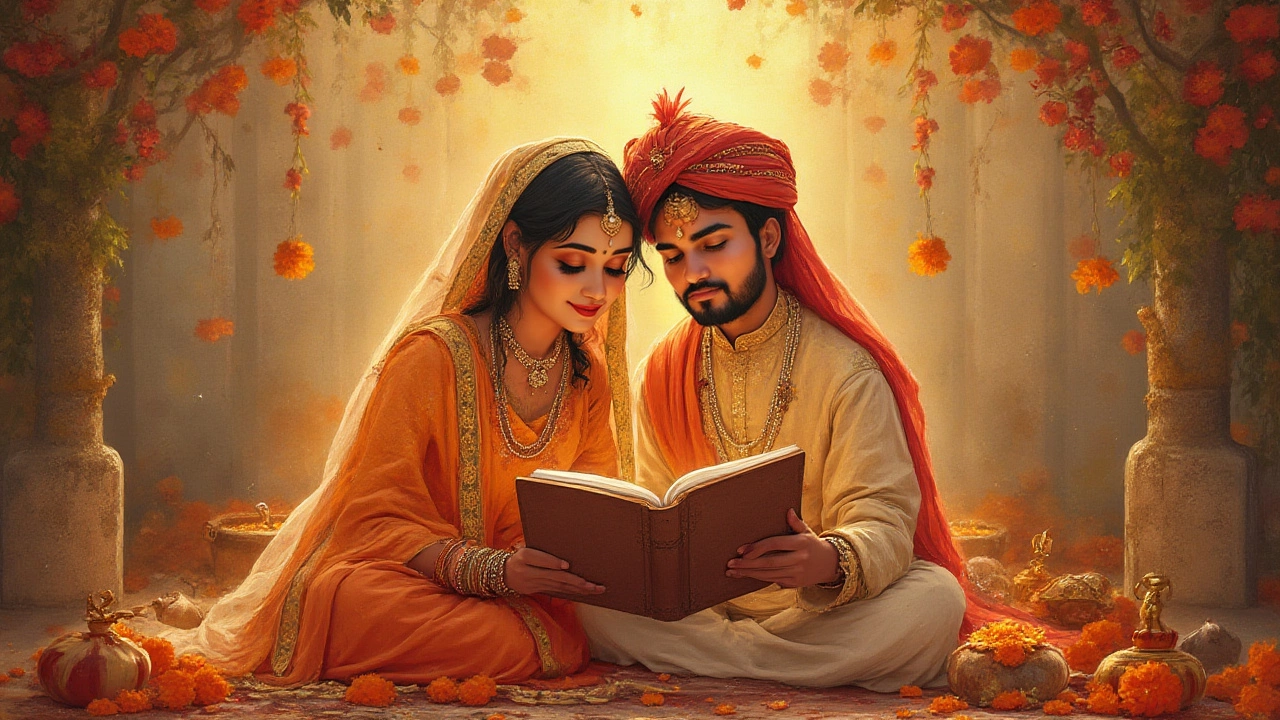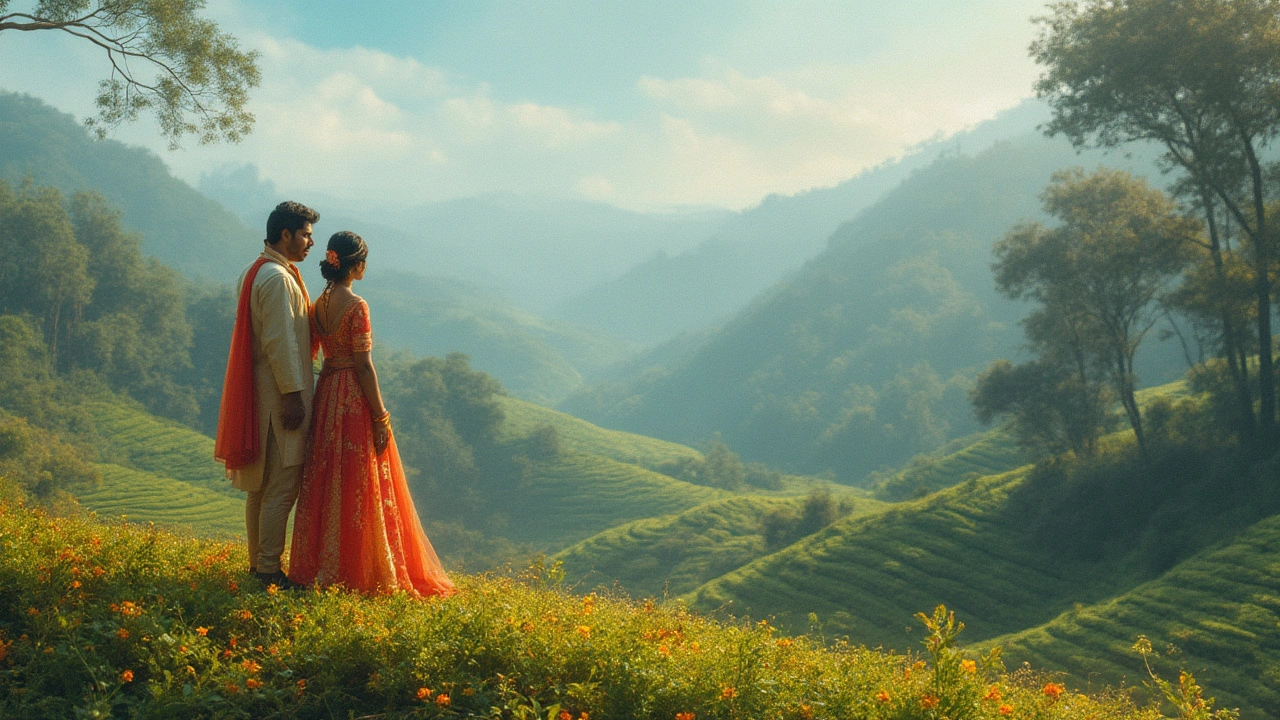Why Is It Called a Honeymoon? Origins, History, and Fun Facts
 Jul, 31 2025
Jul, 31 2025
Picture this: fresh from the big ‘I do,’ couples zip off to a dreamy getaway, sipping cocktails and catching sunsets. But how did that word—honeymoon—even get attached to the first trip married folks take? Turns out, the story’s tangled up in ancient beliefs, old-school calendars, booze, and, believe it or not, the moon above our heads. Dig a little, and the history of the honeymoon is weirder—and more fascinating—than you’d expect.
Where Does the Word 'Honeymoon' Come From?
The name honeymoon didn’t just pop out of nowhere. Go back several hundred years, and you’ll bump into early English, Norse, and Germanic roots trying to explain it. The earliest English references date to the 16th century—Samuel Johnson’s dictionary from the 1700s even has a definition. Here’s the basic gist: the "honey" part is sweet, as in the sugary beginning of marriage, and "moon" hints at a waxing and waning cycle, like the moons in the sky—and that bliss wouldn’t last forever. Talk about a reality check.
If you go even further back, some say there’s a connection to the tradition of drinking mead, a honey-based alcohol, by new couples. In old Norse cultures, newlyweds would drink mead for a moon cycle (around 30 days), steered by the belief it’d boost fertility and happiness. Ancient Persians, Romans, and even Babylonians had customs tying honey, time cycles, and celebration together. It wasn’t always about hopping on a plane to Bali; it was tied up in hopes for a successful marriage, feasts, and sometimes just surviving the in-laws.
One fun but slightly wacky tradition from early 19th-century Europe: some new couples hid out after tying the knot, giving the bride’s family time to accept she was really married. The period was filled with sweet treats and (you guessed it) plenty of booze. French custom called this "lune de miel," which literally translates as “moon of honey.” The phrase made it into English circles, where honeymoon stuck. By Victorian times, the honeymoon had already started to mean a post-wedding trip, a break from the raucous celebrations and a time for the couple to bond.
Some dictionaries, like Samuel Johnson's, were quick to point out the temporary nature of that first blush of married happiness. “Honeymoon,” he wrote, is “the first month after marriage, when there is nothing but tenderness and pleasure; afterwards, all is moonshine.” Not exactly optimistic, but definitely memorable.
What about outside Europe? Ancient Hindu texts describe a month-long post-wedding retreat for couples, filled with rituals and gifts of honey and sweets, while medieval Arab poetry spoke about the sweetness and bitterness of a new union. It seems this trend of metaphor, moon cycles, and honeyed beginnings pops up wherever you look, all circling back to one simple hope: that newlyweds get a moment of pure sweetness before the rest of real life hits.
How Honeymoon Traditions Changed Over Time
Long ago, skipping off together after a wedding wasn’t always the norm. For many, weddings were community affairs, with family and neighbors hanging around for days or even weeks. The idea of a couple slipping away for private time was basically unheard of, especially in more traditional societies. In Europe, the first real honeymoons as travel started cropping up among the elite in the 19th century, particularly in Britain. Here’s the funny part: they didn’t just travel for romance—or even alone. Couples would go on a “bridal tour,” often dragging along a flock of family. Yep, so much for intimate getaways.
By the late 1800s, train travel became more common, and that’s when honeymoons as we know them really took off. Couples could slip away to the seaside or countryside, and suddenly romance was actually possible. In North America, this trend lagged behind a bit. Early settlers, especially in Puritan New England, didn’t see much use for frivolity: honeymoons were barely a blip until the late 1800s. Only with the spread of railroads and a growing middle class did the idea of a honeymoon as a holiday—even a chance to leave the community for a bit—catch on.
You’ll find that even now, different cultures put their own spin on things. In Greece, some couples used to wait a week before going away, giving families time to party and say their goodbyes. In Japan, modern honeymoons are full-blown extravaganzas, often to far-off spots like Europe or Hawaii. The Indian tradition leans towards family involvement; often, a “honeymoon” might be a family retreat. Rural parts of Africa and the Middle East still see the first month as a time of gifts, ceremonies, and careful observation by family elders, to make sure the union is blessed from the start. In some communities, the post-wedding month includes religious rituals aimed at warding off bad luck.
Fast forward to today, and the honeymoon is big business. The travel industry counts on newlyweds for everything from five-star resorts to adventurous treks. The World Tourism Organization estimates that honeymoons account for more than $12 billion USD globally every year. TikTok and Instagram are littered with #honeymoon moments—think underwater hotels in the Maldives, treehouses in Thailand, or safaris across Kenya. It’s still a symbol of a new beginning, but now it’s as much about escape and adventure as it is about sweetness and tradition.
And as weird as it sounds, some people skip the honeymoon or postpone it, either for work, money, or family reasons. There are new trends popping up—“buddymoons,” where friends come along, or eco-honeymoons with volunteering and nature trails. Even ‘minimoons’ (quick getaways for those low on cash or time) have started to claim a spot. The only rule seems to be do what feels right for your own start to married life.

Strange Rituals and Wild Legends from Around the World
If you thought honeymoon traditions were just about beachside cocktails, time to think again. From Viking honey-drinking fests to kidnapping traditions in Eastern Europe, people have had a lot of strange ideas about how to launch a marriage. Take rural Romania, where, even today, some couples fake a "kidnapping" of the bride—she’s held until the groom can "rescue" her and promise gifts for her safe return. It’s a wild, noisy affair, more about hilarity than real danger.
Or look at ancient Wales. Couples there didn’t just leave for a trip—they participated in something called “caru ar y cwch” (loving on the boat), which doubled as a fishing expedition. The idea was that the couple learned to work together, literally in the same boat, for luck in marriage. There are also tales from medieval France, where neighbors would bang pots and pans outside the couple’s window (the charivari), then demand drinks in exchange for silence. Imagine spending your wedding night trying to bribe relatives to let you sleep!
In Kenya’s Maasai culture, newlyweds once had to endure torrents of advice (and teasing) from elders for a whole month, peppered with ceremonial meals and dancing. Among Japan’s samurai, a newly married couple’s first bath together was seen as a spiritual cleansing to kick off the union on a pure note. In Jewish tradition, a week-long celebration called "Sheva Brachot" follows the wedding, with the couple feted by family and friends every night—sort of a group honeymoon at home.
Let’s not forget Italy, where the "luna di miele" echoes that sweet start, but some couples would also be gifted candied almonds (confetti) to symbolize the sweet and bitter moments ahead. In some German villages, the first night after the wedding meant being serenaded outside the house until the couple offered beer—and a dance. Morocco sees lavish seven-day wedding parties, with the honeymoon almost an afterthought, as family ties come first.
One common thread? Across time and place, the start of marriage is a major deal, surrounded by superstitions, public celebrations, family interference, or (finally) some alone time. Each ritual, whether it’s about honey, the moon, or a literal getaway car, points to society’s deep interest in seeing marriages start out sweet.
How the Modern Honeymoon Got So Glamorous
Here’s something wild: just a hundred years ago, the idea of flying across the globe after getting hitched was a fantasy. Now? A honeymoon often means giant resorts, infinity pools, couples’ massages, and rooftop dinners. The shift kicked off after World War II, when air travel became cheaper and middle-class incomes soared. The 1950s and 1960s saw the golden age of honeymoon packages—think scenic train rides across Europe, steamboat trips, and beachside cabins. By the 1970s, tropical destinations like Hawaii and the Caribbean became THE aspiration, especially for North Americans.
Travel magazines from the era gushed over Tahiti, the Bahamas, and the Seychelles, laying out guides for packing, fashion, and etiquette. It wasn’t just about swank; the idea was to prove you’d really “made it.” You see this reflected in Hollywood movies of the time, where the honeymoon suite, the glam hotel, and the big send-off became familiar tropes. Even today, those first Instagram posts often set the tone for the couple’s story together—think matching luggage, beach photos, and smiling selfies on mountaintops.
Celebrity culture pushed things further. When Princess Diana and Prince Charles took a yacht around the Mediterranean for their honeymoon, the whole world watched. Same with famous Hollywood couples jetting off to Fiji or Aspen and sharing stories about trying (and failing) to stay incognito. Hoteliers took note and amped up the luxury for newlyweds, bringing in private pools, butlers, and curated "honeymoon experiences"—from hot air balloon rides in Cappadocia to private island rentals in the South Pacific.
Social media changed the landscape again. The pressure to craft a unique, photogenic trip is massive—sometimes edging out tradition altogether. Planners at luxury hotels have shared in travel interviews that some couples forgo typical romance spots for wild adventures like ziplining, scuba diving, or even wellness retreats focusing on mindfulness together. But at its core, whether you’re in Paris, Peru, or just a cozy cabin in the woods, the modern honeymoon is about carving out a little slice of celebration, privacy, and adventure to mark a pretty big life change.
What’s interesting is the return to basics for some couples. The pandemic forced lots of newlyweds to keep things simple—road trips, camping under the stars, exploring local gems (Vancouver’s beaches, for example, made it onto plenty of people’s shortlists). It proved you don’t need a luxury plan to make those first days magical—just new experiences and a spirit of adventure.

Tips for Making Your Own Honeymoon (No Matter What You Call It)
Okay, so what can you take from this quirky, winding history? The honeymoon isn’t really about matching everyone else’s traditions. It’s about what you and your partner want to remember from your first adventure together. But that doesn’t mean you can’t hack the experience.
- Think about what matters most—privacy, relaxation, adventure, or maybe a mix. There’s no right answer.
- Pace yourself. That first taste of married life can be overwhelming after all those hugs, photos, and family moments. Give yourself downtime.
- Keep it sweet—literally. Lots of couples still carry a honey treat or local sweet from home, as a small nod to all that “honey” history. Could be honeycomb in tea or the classic mead toast.
- Remember the world’s gotten much bigger. The most unique honeymoons aren’t always the priciest. Think hikes in your own region, stargazing, bike trips, or even a backyard tent if you’re on a budget.
- Unplug. It sounds cliché, but even if you’re tempted to post that sunrise photo, try to put your phone down and focus on the person you just married. That’s why the tradition started—just in a different way.
And if your plan goes sideways? Welcome to married life! That’s the magic—and sometimes the comedy—behind the honeymoon. It’s not where you go that matters. It’s jumping into your new story together, however sweet, sticky, or full of surprises that first “moon” might be.